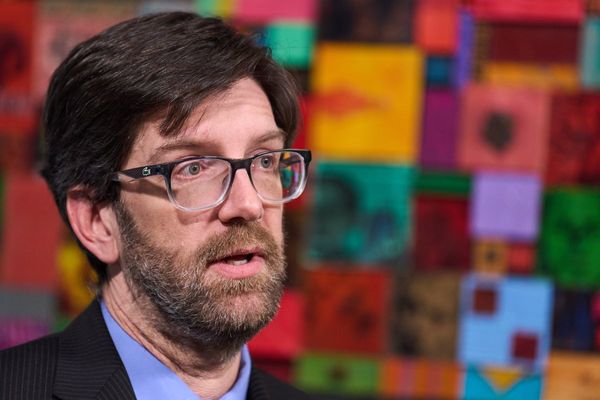When students move from university course work to real-world applications like internships, practicums or clinical placements, it’s not just about what they know, but how they use what they know.
These experiences are often the first time students apply classroom learning in unpredictable, high-stakes environments.
For students with disabilities, that leap can be especially challenging. Structural barriers, inaccessible learning environments and past negative experiences can make these transitions harder.
Something that can help students overcome barriers is simulation-based learning — when, via role playing, students practise key skills, try out strategies and learn from mistakes without the real-world consequences. It’s an approach practised across fields like health care, business as well as social work education.
We decided to explore the use of simulations with students who experience disability-related barriers, drawing on research related to learning through simulations and students with disabilities in practicum learning.
Read more: Simulations with actors prepare nurses for the demands of their profession
From participants to partners
We took a “students as partners” approach, which sees students as active collaborators in designing their own learning experiences.
In this case study, we sought to design simulations that were practical, empowering and suited to a neurodiverse, social work university student. We also wanted simulations that reflected his particular concerns and were grounded in his unique lived experiences.
The student had experienced barriers in a previous work-integrated learning placement. Before starting another, he needed a safer way to build confidence, practise communication and prepare for the professional environment.
A team approach
The project was collaborative. As faculty members, we worked with the social work student involved in the field education course and a theatre student hired as our partner to co-create the simulations. Other participants were from MacEwan’s access and disability resources and the Centre for Teaching and Learning.
Together, the group co-designed two tailored, realistic simulation experiences aimed at helping the social work student prepare for his upcoming practicum.
How it worked
The team met over a summer to co-design the personalized simulations:
A workplace conversation, where the student practised setting expectations with a supervisor.
A client-facing scenario, where he responded to a phone inquiry — something he was likely to encounter during his placement.
Each simulation followed a three-part process:
Briefing: The student reviewed the context and goals.
Role play: The theatre student played a realistic role based on the scenario.
Debrief: The student watched a video of the simulation, reflected on what worked, and received supportive feedback.
By repeating the simulations multiple times, the students could build skills gradually, adjust strategies and become more confident with each try.
The theatre student also gained valuable experience learning and practising how to respond authentically and adapt during unscripted moments — skills that carry over to his own performance training.
What changed
When determining learning goals for the simulation, we focused on aligning course learning outcomes with needs specific to the social work student, such as communication skills. With each role play rotation, we captured how long it took for the social work student to clearly communicate his question or reflection to the client (played by the theatre student).
The amount of time decreased each rotation. By the end, the social work student reported he felt more confident moving through the situations. He became quicker, more confident and more comfortable with professional communication.
Most importantly, he reported feeling included and respected throughout the process. He said:
“Being involved in everything helped me feel more prepared. I made mistakes in the simulation and learned from them — so I didn’t have to make those same mistakes in real life.”
The theatre student echoed this:
“I wasn’t just acting — I was helping someone grow. It made me realize how powerful theatre can be beyond performance.”
Beyond skill development, this was capacity-building, confidence-building and community-building — all made possible by student-centred design. A year later, the student with a disability has successfully completed two field practicums and has graduated.
Why it matters
When universities design learning experiences with students, not just for them — especially students who are often left out of the process, like students facing disability-related barriers — opportunties for student engagement and empowerment are strengthened.
Simulations give students a chance to:
Practise real-world scenarios without real-world risk.
Learn from feedback in a supportive environment.
Build self-advocacy and professional communication skills.
Develop strategies that work for their unique needs.
This kind of tailored preparation can be the difference between just getting through a placement and truly thriving in it.
Looking ahead
This project shows that personalized simulations, grounded in student experiences and supported by interdisciplinary collaboration, can pave the way for more equitable, empowering education.
It suggests how when students are treated as co-creators, not just consumers or recipients of education, the learning becomes deeper, more inclusive and more meaningful. It also points to the relevance of broader use of co-created simulations across disciplines. Future possibilities include:
Adapting simulations for group settings or online delivery.
Partnering across departments, like theatre and business or accessibility and STEM.
Designing for diverse learning needs from the start, using Universal Design for Learning principles.
The approach is flexible, scalable and most importantly, human-centred. Sometimes, the best way to prepare for real life is to practise it.
The authors do not work for, consult, own shares in or receive funding from any company or organisation that would benefit from this article, and have disclosed no relevant affiliations beyond their academic appointment.
This article was originally published on The Conversation. Read the original article.







